Canmore “Engine” Bridge
They call it the Canmore “Engine” Bridge. Here in a thoroughly spectacular setting, it spans the mighty Bow River and while used by pedestrians and cyclists today, it used to support a railway line that once served Canmore’s coal mine. Yes, they mined that stuff here – and in fact many of the newer residential areas are above the old underground workings. Today the town is more known as an outdoor recreation mecca with few fully aware of its gritty industrial past. The bridge is one of the last things left from those days.
Canmore was founded in the 1880s, concurrent with the railway’s arrival (Canadian Pacific’s east/west mainline). Right off the bat, coal was discovered and soon on a mine established. The railway itself became a good customer for a time, using it to fire its fleet of steam locomotives. The rest was shipped out to industrial concerns and sold as domestic heating fuel. Back when houses were heated by coal – quite common in the old days.
To reach the mine a spur line was built. It left the mainline, crossed the river and then trended east to reach the loading tipple. It was perhaps a few clicks long. When built it was outside town. Now it’s well within its borders.
The original bridge here was made of wood. In 1919 it burned down and was replaced by the current structure. This second bridge was not built new here however, but rather came in from somewhere else, and was reused.
Here’s what we know. The bridge is said to be from 1880.* Indeed, it follows design and construction techniques of the era. Clearly it’s pre-tewentieth century – no argument there. It was already old when installed in Canmore. We don’t know from where it may have come – CPR records searched were rather silent on it. We did find it was built in Toronto however.
* When speaking of the “bridge”, we’re referring to the most prominent span, one of two that make up the structure as a whole. The second span is circa 1910/1920s, probably, is of different form and is only touched on briefly.
That the CPR had a spare bridge kicking about is not odd. It must have been replaced itself at some point (probably because it was being taxed capacity wise) and held in case there was a need somewhere down the road. The wood bridge in Canmore burned down, they had a nice steel one with nothing to do and it was the right size and capacity rating. Viola! What a beautiful solution. And in typical railway fashion it would have been done on the cheap. It all fits.
The bridge remained in use until the mine closed in the late 1970s. In the some eighty five odd years the “Canmore Mines” operated almost 16 million tons of coal, coming from both underground and pit mine workings, was extracted here. This translates into well over two hundred thousand rail cars of the era being filled and all moved out over this very bridge, as many as a hundred per day when business was good. That’s a lot of stuff!
Post closing – for a time the bridge stood there disused, the railway not terribly interested in spending money to dismantle it. Then at some point a couple decades ago it was bought by the town, probably for a nominal sum, and converted to pedestrian use (officially that is, I heard it was used in that capacity even before that). It’s now part of the Canmore Pathways system. The bridge also supports a pipeline.
In design the bridge uses a fairly rare Whipple Truss, the first and only this author has seen in person. Diagonals are elongated rods and tie in with a vertical at least two away from the anchor point. These are under tension. Pin connections are used throughout as was common for the time. It also has box ends, further dating it.
A Whipple Truss structurally is very similar to the Pratt Truss design more commonly used by railways.
A second span here uses a more conventional Warren Pony (open topped) Truss. Compared to the stunning piece of metalwork that is the Whipple span, the second one gets minimal attention from us. Suspect that holds true of anyone who views the Canmore Engine Bridge.
The coal mine, which was one of the earliest in the province, one of the longest lasting and one of the biggest in terms of output once used a steam locomotive to move cars about their property. And they did so well into the 1960s. This “engine”, for which the bridge is named (we believe – no one we reached out to seemed to know for sure) resides today at Calgary’s Heritage Park.
The bridge is certainly stunning in it’s own right. Add to that the scenic wonder that is Canmore, what with all those towering mountains, the deep green Bow River, the deep green woods, well, it’s awe inspiring. We stand there and repeat to ourselves “this is something amazing”. Could a more scenic setting be imagined? Not likely. Prominent peaks seen include Ha Ling Peak, Miner’s Peak, Mt Lawrence Grassi and East End of Rundle a long mass that continues west all the way into Banff Park.
We hiked over the bridge…
Canmore Loop.
Getting high in the area…
McConnell Point.
Wind Ridge.
If you wish more information on what you’ve seen here, by all means contact us!
Date: May, 2017.
Location: Canmore, AB.
Article references: Book: Canmore – story of an era, Various CPR records, Alberta Energy (Ministry of Mines), BenGadd.com, Bridgehunter.com.
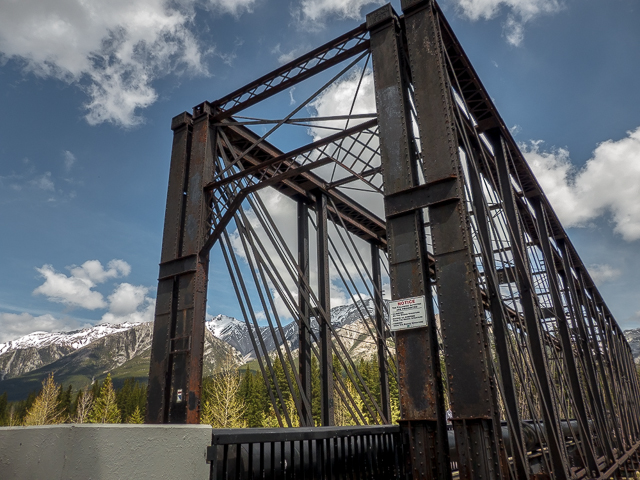
The Canmore “Engine” Bridge, Canmore Alberta.
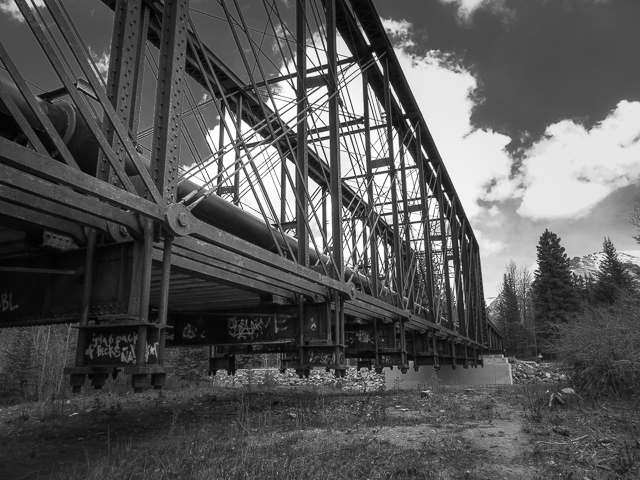
It’s along a former spur line to a coal mine.
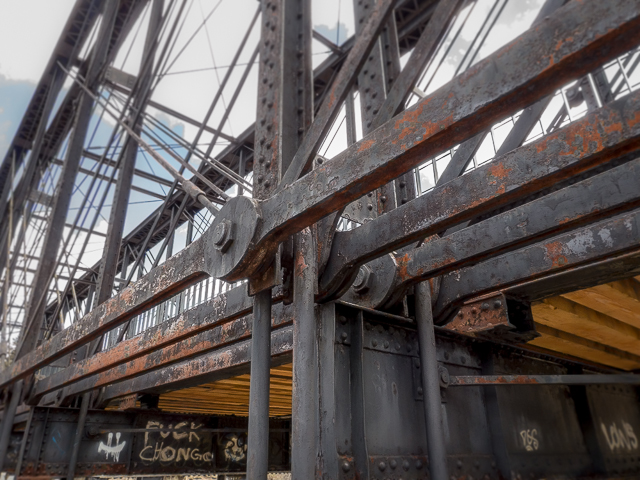
It’s a rather rare (and old) pin-connected truss design. What did Chong do?
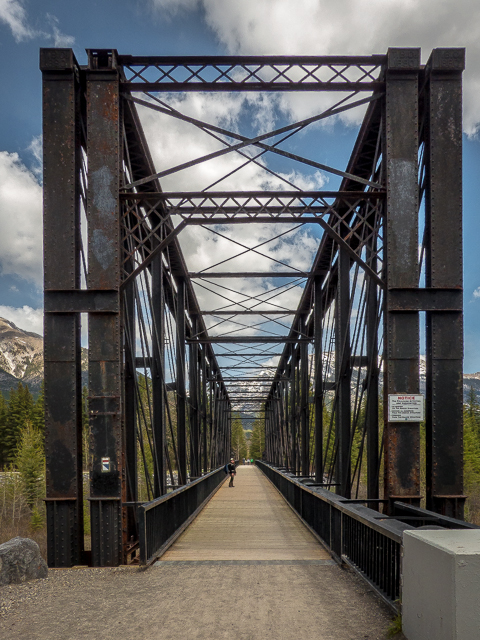
Today, it’s part of the Canmore Pathway system.
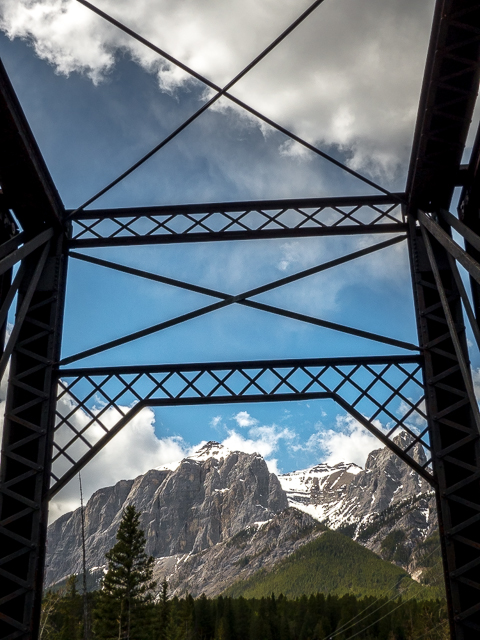
Mountains in back are an amazing scenic backdrop.
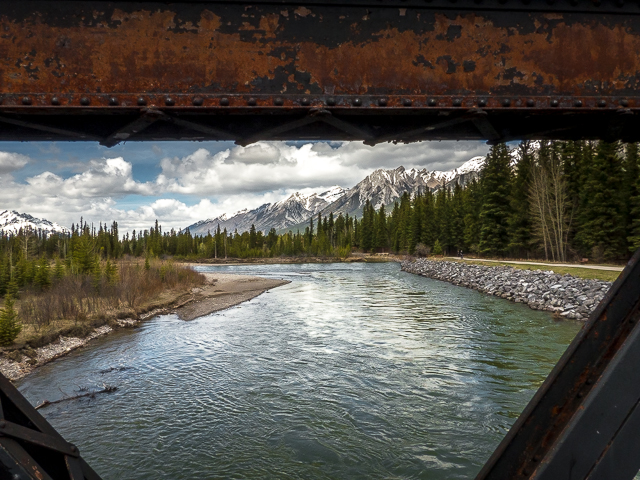
It crosses the mighty Bow River.
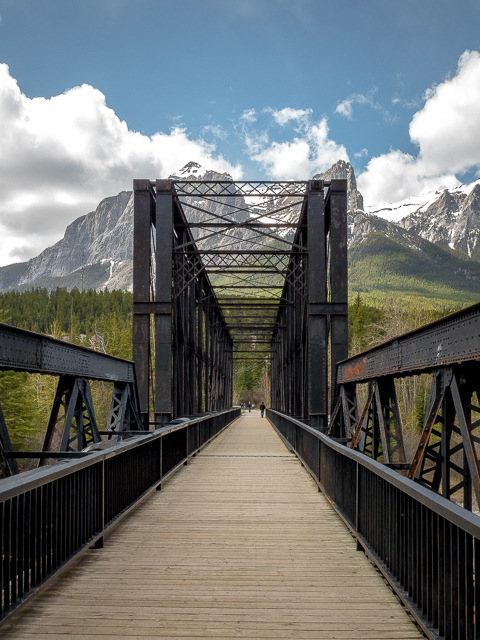
The bridge was last used by the railway around 1979.
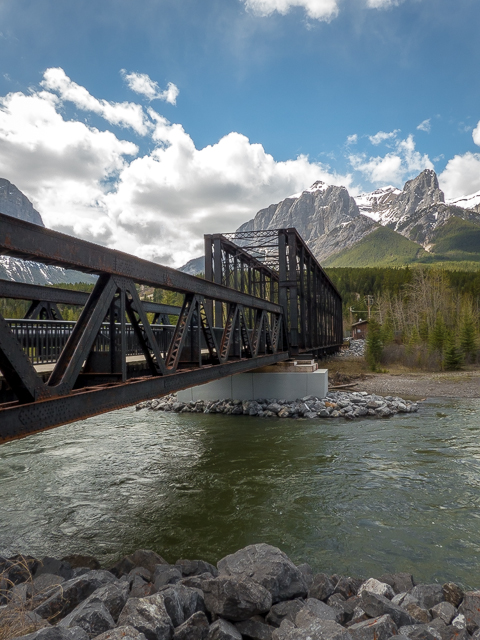
East End Of Rundle, the peak in back.
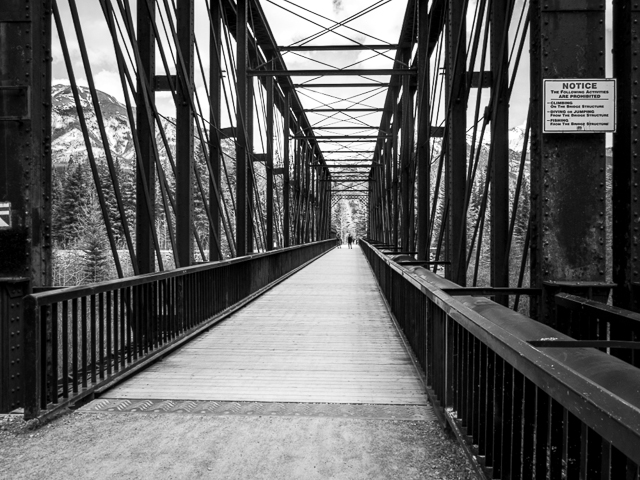
The bridge is not original to this site – read the post to know more.
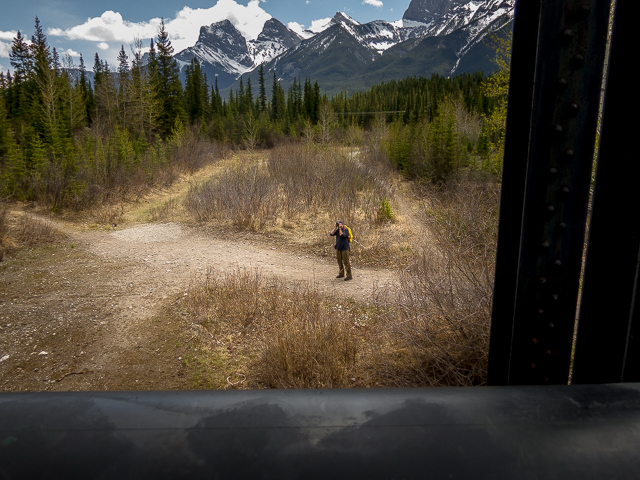
You author hard at work.
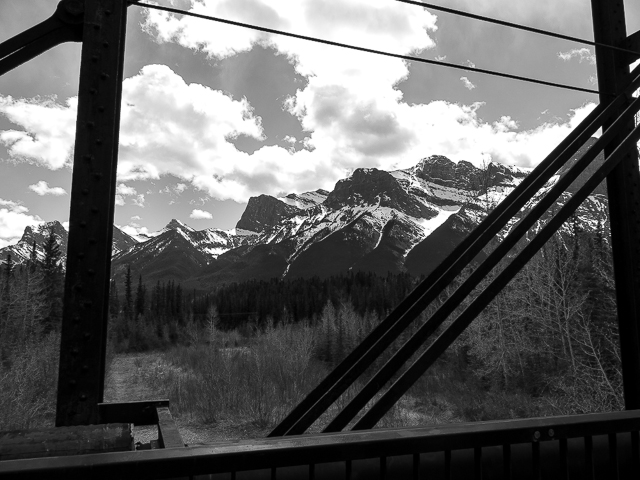
Mt Lawrence Grassi.
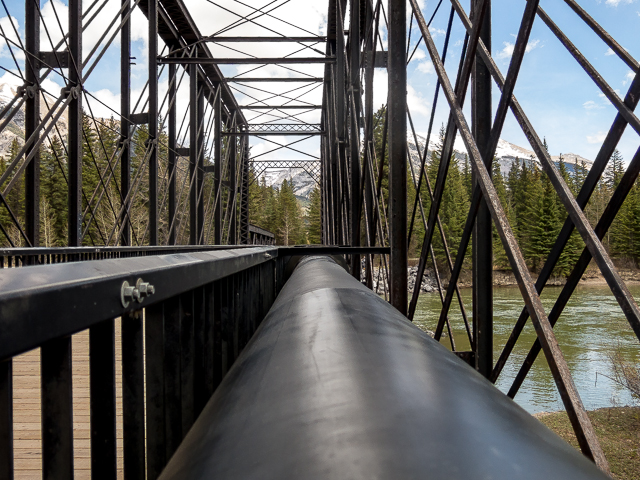
The bridge supports a pipeline.
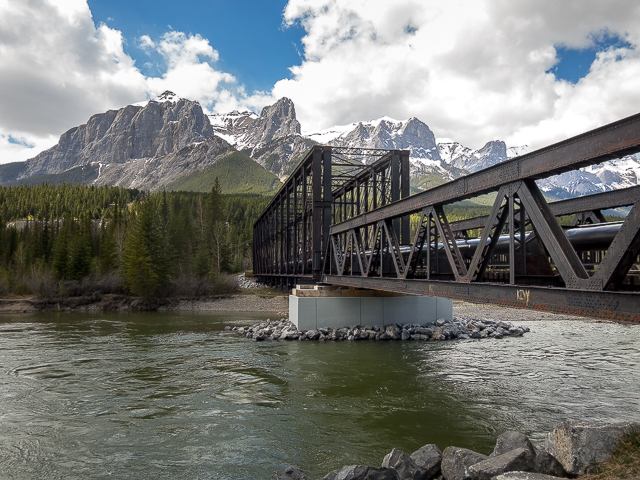
There’s no bad views in Canmore.


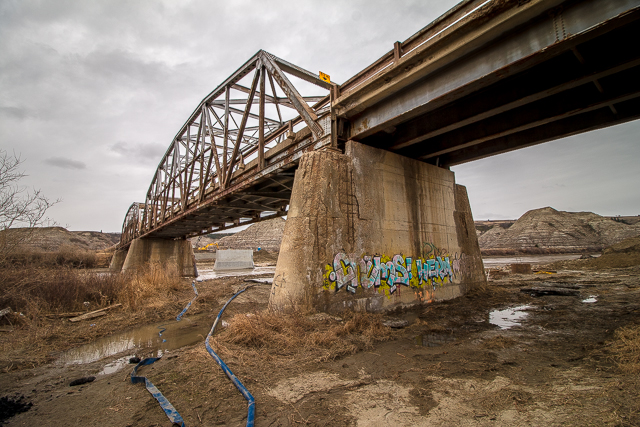
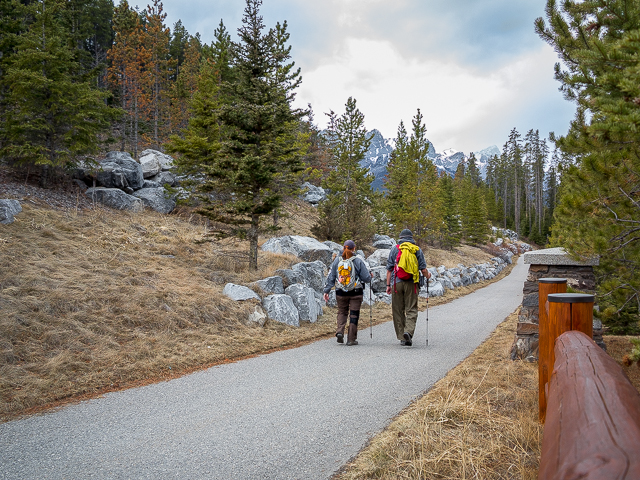
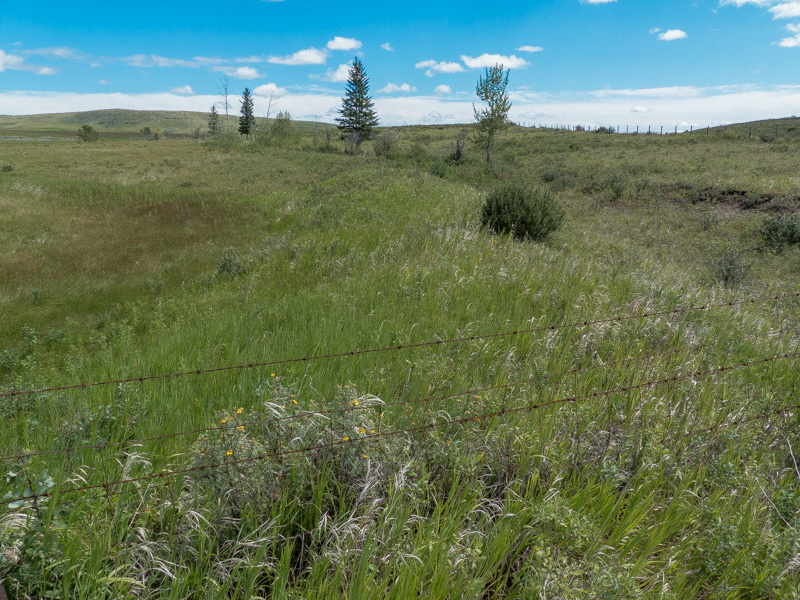
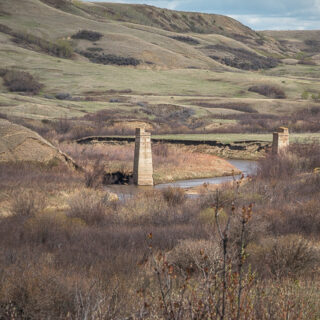
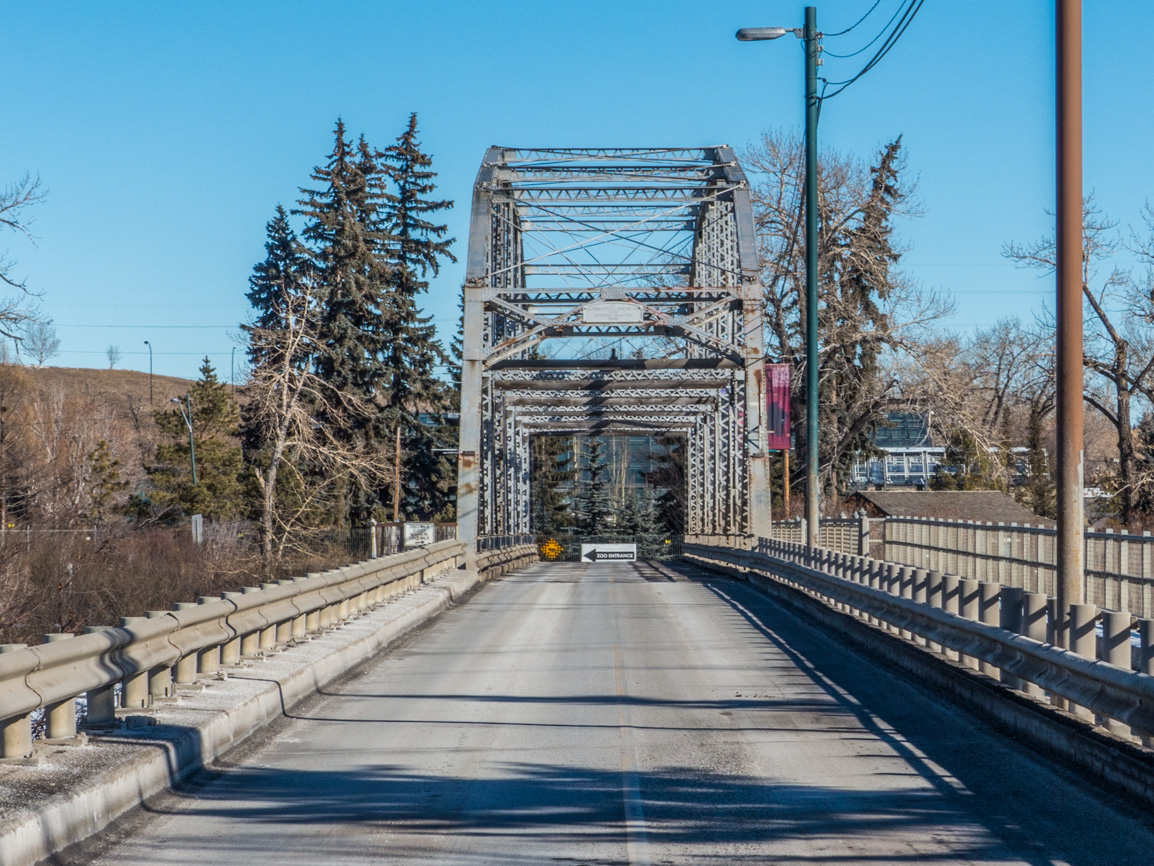
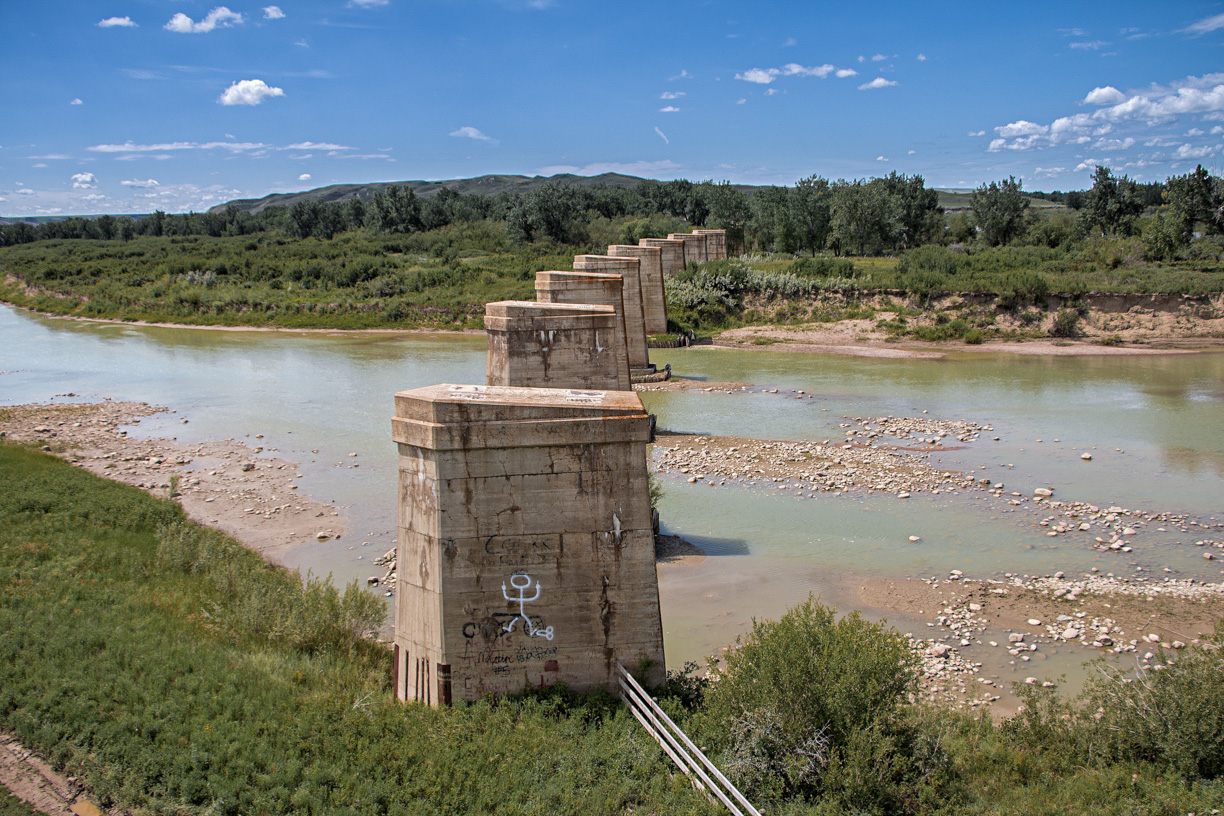
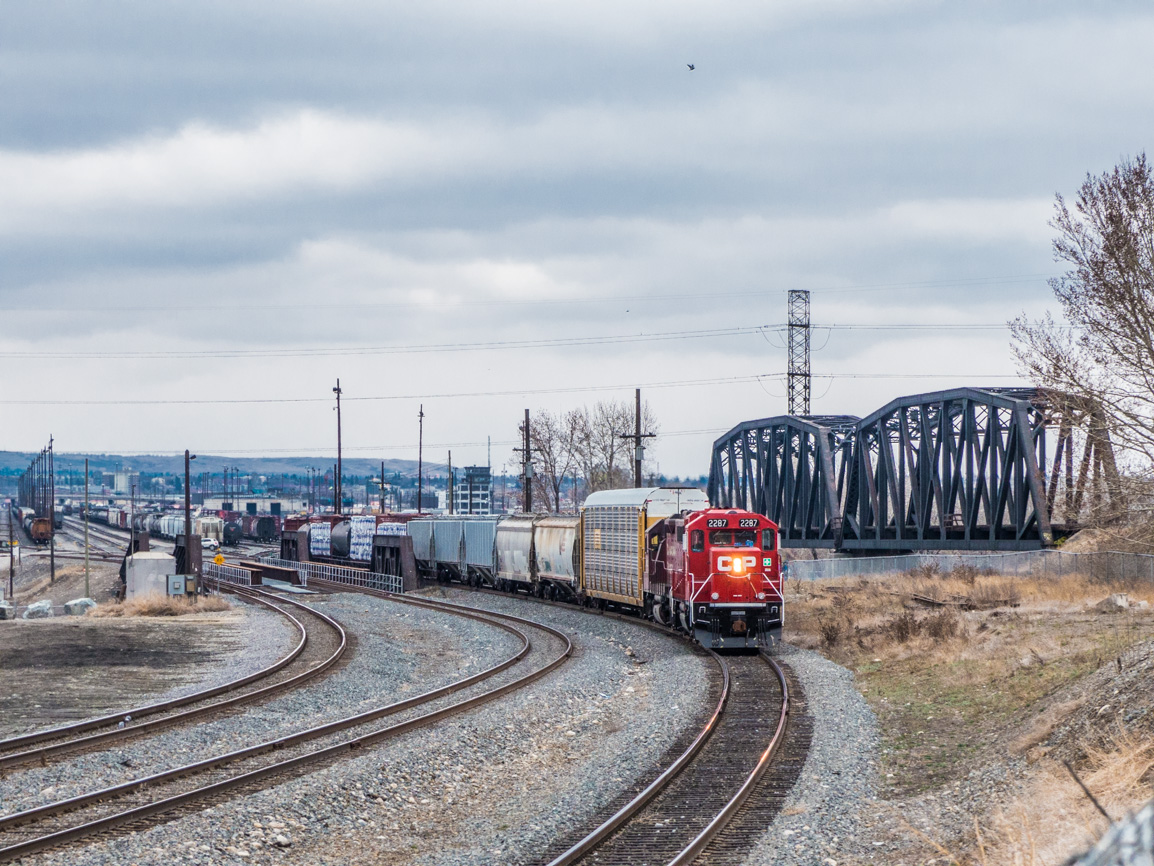
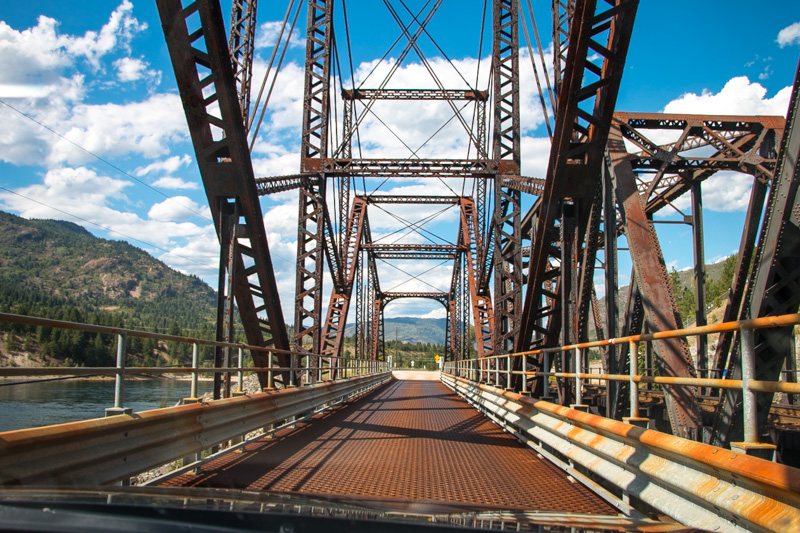
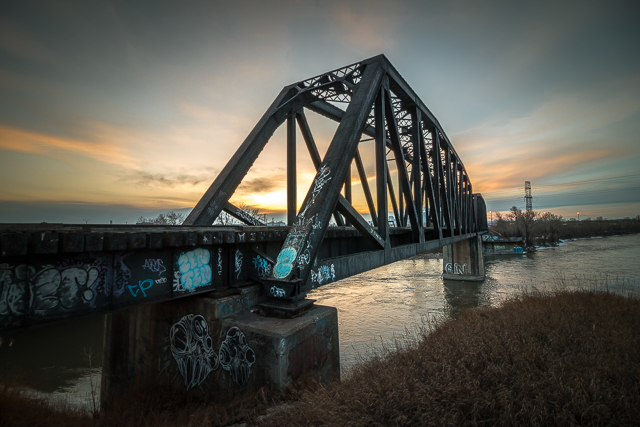
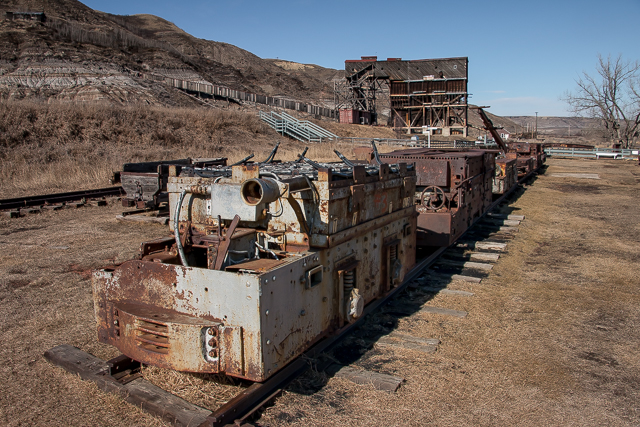
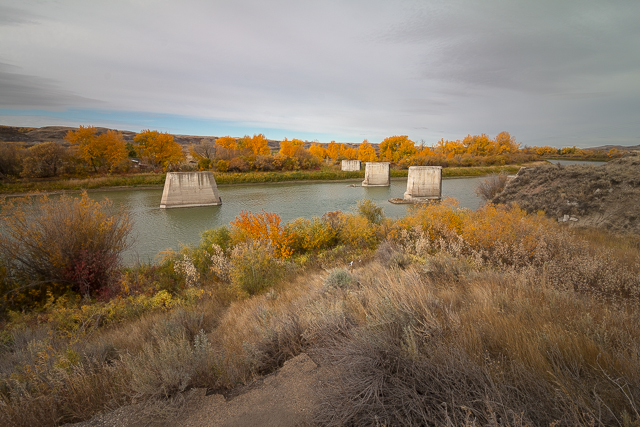
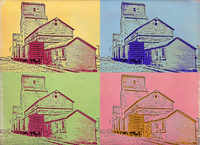






Great pics and story Chris. I think that the CPR designation for the line was the “Canmore Mine Spur”. I inspected this bridge around 1977. If I remember correctly both spans are constructed of iron and the pin connected through truss was fabricated in 1885. The fabrication date sticks in my mind because it is the oldest span that I ever inspected. Cheers.
Thanks, it’s an impressive structure. Our data shows an 1880s build date, but a few years older than what you mention. Either way, it’s ancient. That’s an interesting job, bridge inspector.
One of the comments below mentioned that this bridge used to be referred to by locals at one time as the “indian bridge”. I grew up in Canmore in the 70s/80s/90s and it’s always been known as the Engine Bridge, and no other name I can remember. Now, up river, less than a mile, there’s a spot called Bow River Bend in which sat a small tiny cottage (no longer there now), and spanning the river, which is much narrower in this area, there was an old wooden bridge that in itself had been there for decades (it is no longer there), and that is the bridge that locals called “the Indian bridge”.
Ahhh, that helps explain things. Thanks for clarifying and “adding to the story”.
One heck of a scenic setting indeed! Thank You Chris & Connie!
You are most welcome Carol!
I have crossed this bridge with someone who was even prettier than the scenery. Canmore is a special place to me.
Ahhh, that’s special!
We did a job on the river banks here a few months ago.if you turn right at the end of this and walk down the trail for 5 minutes you will come to a little spot we were working but it’s also where the local hippies ride their bicycles to so they can drink beer all day.
Haha! Is there a place in Alberta Rockies you haven’t worked at?
(Randy, a friend of the society, does shore line remediation, among other things).
Two thumbs up!!!!
And two hands clapping. Thanks!
It is wasted on pedestrians for sure!
Big bridge for small people. It should last forever now!
Scenes from the movie ‘Last of the Dog Men’ were filmed there.
I’ll have to look it up. Thanks for the tip.
Wow!
A person of few words…still, a big thanks.
Been used for over 30 years as a foot bridge. Locals called it at one time the “Indian Bridge” I used walk across it whenever I visited my grandmother there.
Hmmm, that name is new to us. However, yes a lot of people we chatted with spoke of using it as a foot bridge long before it became that in an official capacity. Thanks for commenting!
I love the mountains!
You and me and Connie, and everyone does! Don’t they?
Looks like a Phoenix Iron works truss bridge.
Not familiar with that firm, however we do know this one was made in Toronto Ontario. Thanks for commenting!